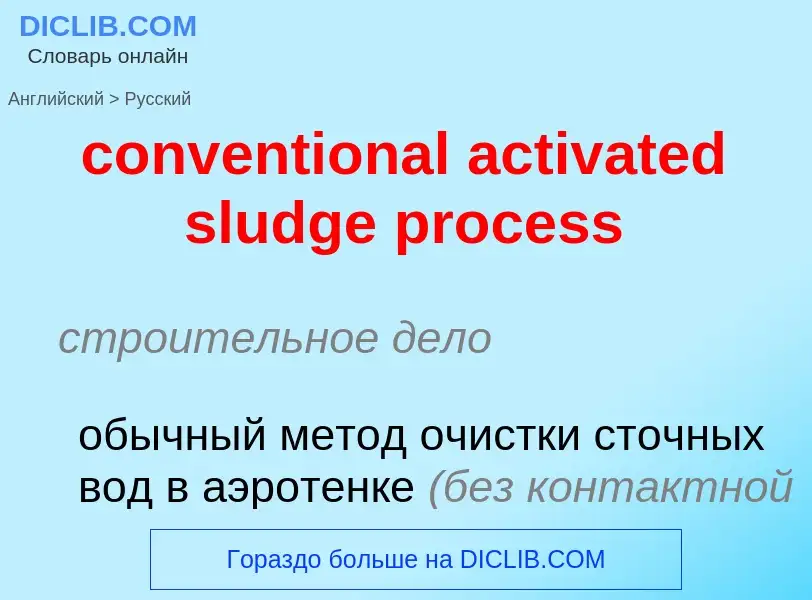Vertaling en analyse van woorden door kunstmatige intelligentie ChatGPT
Op deze pagina kunt u een gedetailleerde analyse krijgen van een woord of zin, geproduceerd met behulp van de beste kunstmatige intelligentietechnologie tot nu toe:
- hoe het woord wordt gebruikt
- gebruiksfrequentie
- het wordt vaker gebruikt in mondelinge of schriftelijke toespraken
- opties voor woordvertaling
- Gebruiksvoorbeelden (meerdere zinnen met vertaling)
- etymologie
conventional activated sludge process - vertaling naar russisch
строительное дело
обычный метод очистки сточных вод в аэротенке (без контактной аэрации)
строительное дело
окислительная траншея, циркуляционный окислительный канал
Definitie
Wikipedia

The activated sludge process is a type of biological wastewater treatment process for treating sewage or industrial wastewaters using aeration and a biological floc composed of bacteria and protozoa. It uses air (or oxygen) and microorganisms to biologically oxidize organic pollutants, producing a waste sludge (or floc) containing the oxidized material.
The activated sludge process for removing carbonaceous pollution begins with an aeration tank where air (or oxygen) is injected into the waste water. This is followed by a settling tank to allow the biological flocs (the sludge blanket) to settle, thus separating the biological sludge from the clear treated water. Part of the waste sludge is recycled to the aeration tank and the remaining waste sludge is removed for further treatment and ultimate disposal.
Plant types include package plants, oxidation ditch, deep shaft/vertical treatment, surface-aerated basins, sequencing batch reactors (SBRs). Aeration methods include diffused aeration, surface aerators (cones) or, rarely, pure oxygen aeration.
Sludge bulking can occur which makes activated sludge difficult to settle and frequently has an adverse impact on final effluent quality. Treating sludge bulking and managing the plant to avoid a recurrence requires skilled management and may require full-time staffing of a works to allow immediate intervention. A new development of the activated sludge process is the Nereda process which produces a granular sludge that settles very well.


.jpg?width=200)
![Surface aerator for aeration tank at activated sludge sewage treatment plant (at Morro Alto Treatment Plant, [[Vespasiano]], Brazil) Surface aerator for aeration tank at activated sludge sewage treatment plant (at Morro Alto Treatment Plant, [[Vespasiano]], Brazil)](https://commons.wikimedia.org/wiki/Special:FilePath/Activated sludge sewage treatment plant aeration tank.png?width=200)

![Davyhulme Sewage Works Laboratory]], where the activated sludge process was developed in the early 20th century Davyhulme Sewage Works Laboratory]], where the activated sludge process was developed in the early 20th century](https://commons.wikimedia.org/wiki/Special:FilePath/Davyhulme Laboratory - early 20th century.jpg?width=200)

![Aerial photo of Kuryanovo wastewater treatment plant in [[Moscow]], Russia Aerial photo of Kuryanovo wastewater treatment plant in [[Moscow]], Russia](https://commons.wikimedia.org/wiki/Special:FilePath/Moscow Kuryanovo wastewater plant asv2018-08.jpg?width=200)
